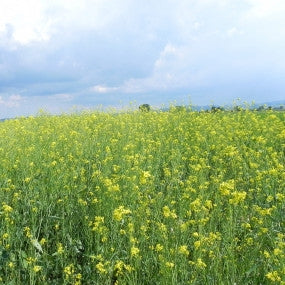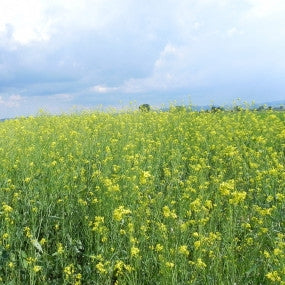BRASSICA JUNCEA BIOFUMIGANT
Have a question?

BRASSICA JUNCEA BIOFUMIGANT
Dettagli
Brassica juncea (brown mustard)
Brassica juncea ISCI99 is an exceptional green manure variety selected for its high content of bioactive molecules (about 30% more glucosinolates than the most widespread brown mustard varieties) and consequently has a high capacity to contain pathogenic fungi and parasites of the land. The high concentrations of bioactive compounds naturally resolve problems related to soil tiredness. It produces a high biomass (up to 120 tonnes of fresh matter per hectare) and is a rustic variety with good adaptability even in growing conditions characterized by high temperatures. Due to its short cycle with early flowering it is ideal for horticulture both in open fields and in greenhouses.
Full flowering is the best time to bury B. juncea ISCI99. The action must be carried out at the same time as chopping to avoid dispersing the volatile bioactive compounds. Therefore, immediately after chopping it is necessary to bury the chopped biomass using a cutter, a disc harrow or surface plowing. The plant must be chopped as finely as possible with a stalk shredder or an above-ground cutter to activate the biochemical reaction. It is also necessary that the operations are carried out with adequate soil humidity. If this is not the case, irrigation is recommended to promote the enzymatic reaction and consequently the release of bioactive compounds.
Sowing period: autumn sowing from the end of September to mid-November in mild climates with chopping in March-April, winter sowing from December to January in hot climates, spring sowing from mid-February to the end of March for all climates with chopping in May. In the greenhouse sow all year round.
Sowing rate: 9/11 kg per hectare. It is advisable to refine the soil and sow in a continuous row with a wheat seeder or precision seeder. Row spacing of 5/15 cm. Maximum depth of 1/2 cm.


